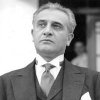Čuveni skulptor iz Minesote, SAD-a, Zoran Mojsilov, inače poreklom iz sela Vlasi, počeo je sa izgradnjom brane na reci Jermi koja će biti možda i na svetu jedinstvena po tome što će predstavljati pravo umetničko delo.
Kako je Pirotskim vestima izjavio Mojsilov, na ovom mestu brana postoji poslednjih 150, možda i 200 godine, ali svakog proleća Jerma nadođe i bujica odnese branu.
.- Za ovaj poduhvat sakupio sam novac-donaciju naših iseljenika iz SAD-a, ali i mnogih Amerikanaca. Predstavio sam svoj projekat na sajtu “kickstarter”, koji finansira umetničke projekte i ljudi su mi uplaćivali ko je koliko mogao tako da sam sakupio oko 12.000 dolara kako bi napravio branu, koja će omogućiti i navodnjavanje polja nadomak sela. Brana je postojala poslednjih 150, možda i 200 godine, ali je reka često odnosila. Ovoga puta ćemo to permanentno da rešimo, a selo će rešiti i problem sa vodom jer seljaci više neće morati da koriste pijaću vodu za polivanje bašti-kaže Mojsilov, koji je jedinstven po tome što u svoja umetnička dela, koja su uglavnom masivna, ugrađuje autentične predmete sa ovog podneblja poput poljoprivrednih alakti i sličnih stvari od gvožđa i kamena, koja se vekovima koriste na ovim prostorima.
Mojsilov živi u Minesoti ali svakoga leta dolazi u svoju postojbinu svojih predaka, u prelepo selo Vlasi. Svoja umetnička dela Mojsilov pravi od kamena, drveta, gvožđa, a o njegovom umeću jedan indijanski vrač iz plemena Dakota, inače njegov prijatelj, kazao je da je Mojsilov čovek koji ima snagu da probudi kamen. Njegove skulpture nalaze se u čak dvadeset država SAD-a. Za svoj najnoviji umetnički poduhvat, branu na Jermi, Mojsilov je ponovo iskoristio jedan originalni “ukras”, deo šine sa pruge uskog koloseka kojom je nekada kanjonom Jerme “tutnjao” voz-ćira, koji je transportovao ugalj iz odavno ugašenog rudnika uglja “Jerma”.
Po njegovim rečima, on je do sada u više navrata pokušavao da napravi skulpturu koja bi krasila selo, ali su poslednju njegovu skulpturu nesavesni meštani sela uništili, drvo zapalili a gvožđe prodali u sekundarne sirovine.
Ovoga puta sam napravio kompromis sa meštanima jer su shvatili da je pravljenje brane u njihovu korist tako da mislim da nećemo imati sličnih problema-kaže Mojsilov.
Tekst i foto Aleksandar Ćirić, Pirotske vesti





